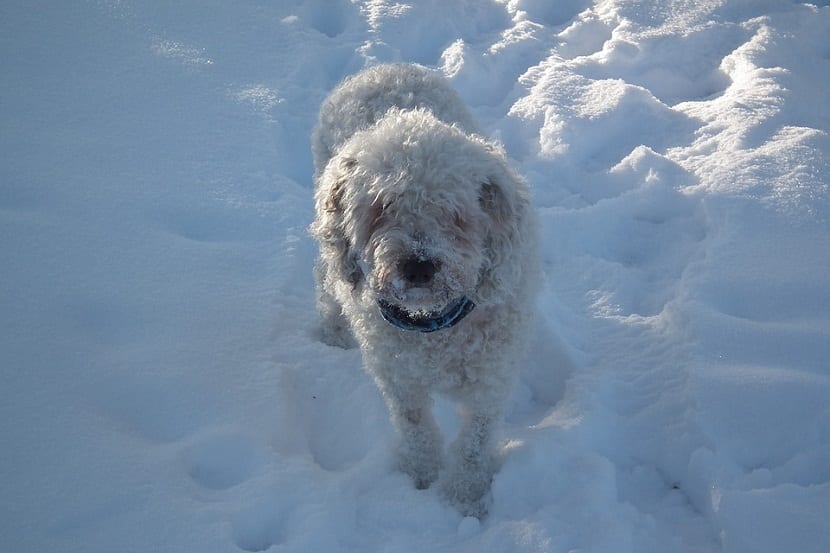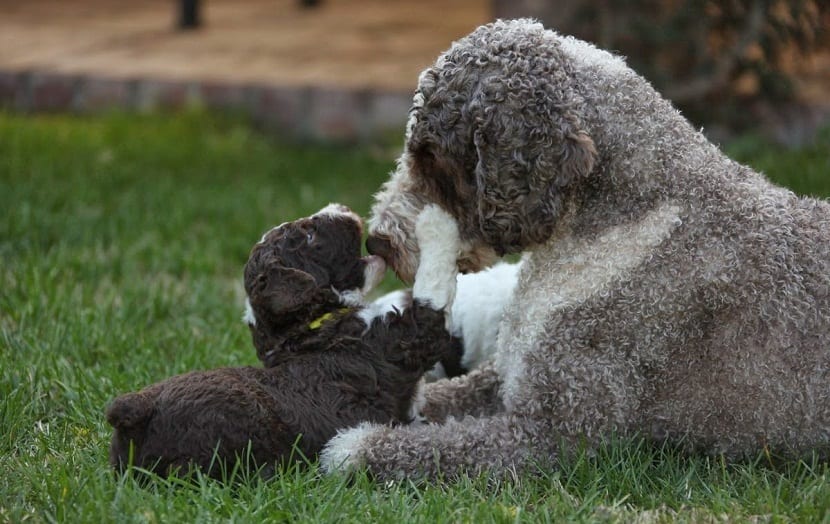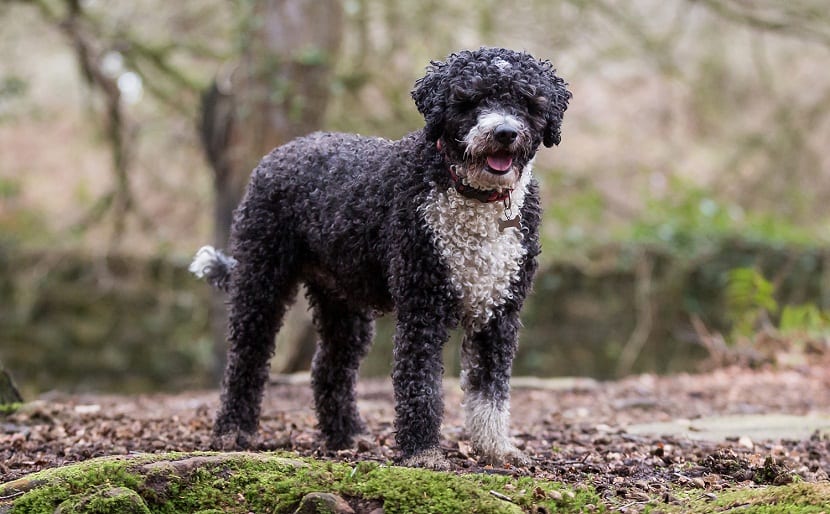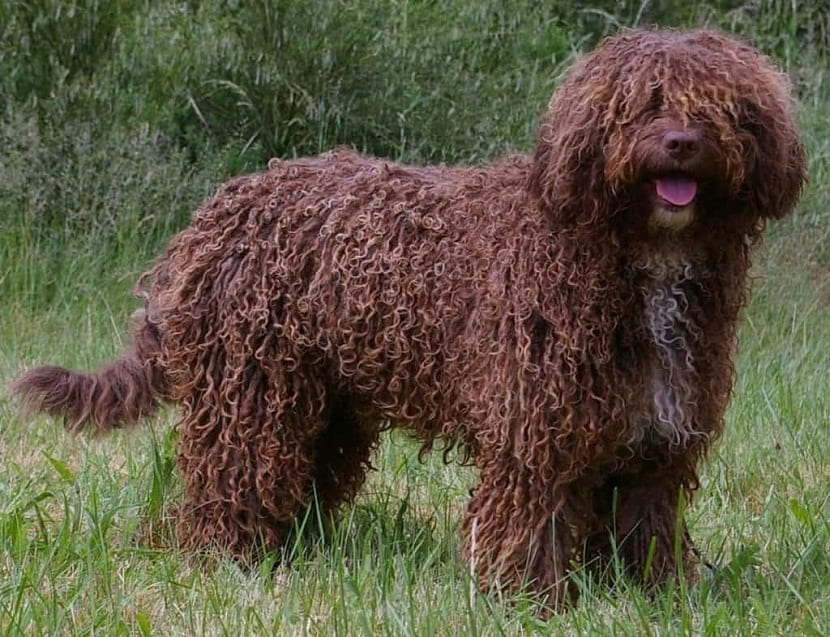
Each breed of dog has unique characteristics. This is due to its origins that are modifying the temperament and defining their attitudes and appearance from the genetic point of view. Since dogs have accompanied man for millennia, collaborating with him in daily work and survival, many current breeds retain their name and appearance important features of its origins.
From

Such is the case of the Spanish water dog that came to the Iberian Peninsula through the southern border, brought by the first Arab invasions.
This mascot traveled with man on ships and it was very useful for fishing activityFor this reason it is called a water dog and is currently a recognized breed and is increasingly positioning itself as a companion pet throughout Europe.
The most remote ancestor of the water dog is known as the barbet dog. This breed also gave rise to the poodle and other breeds of water dogs like that of Spanish, Portuguese, French or Roman. It is believed to have been present on the Iberian Peninsula since 1100 BC and its exact origin is unknown.
The introduction of the water dog to the European continent dates back to the XNUMXth century during the Islamic invasions.
Evidently its presence in Spain is very marked in the region of Andalusia. Between the fourteenth and seventeenth centuries there is extensive documentation of the massive presence of the water dog, in areas of Seville and the marshes of the Guadalquivir river. Prior to their recognition as a breed in 1986 and officialization in 2011, these dogs were known by different names such as the Andalusian Turkish dog and the churrito.
Features
Traditionally their functions were of sheepdog, hunter and fisherman where they were doing exceptionally well.
In more recent times they showed excellent ability to be part of rescue teams, fire fighting units, detecting drugs and poisoned baits for the Forest Guard. Due to his obedience, agility and empathy they have also done a very good job in therapy and as pets.
This canine breed is cited as a woolen dog in texts found from the time of Fernando VII, that is, the end of the XNUMXth and XNUMXth centuries. It is presumed that it spread to countries such as Italy, Portugal, France, England and Ireland through the different waterways.
Due to their origins as a working dog This breed has well-developed obedience and is also very intelligent and quick to learn. Under normal conditions it appears as a noble, faithful and affectionate pet and it is a breed that is attached to the owners doing an excellent function as a companion pet.

It also shows basic hunting and herding instincts and easily adapts to different environments. They are comfortable in arid terrain, green meadows and swampy areas and their special ability is that they are excellent swimmers and show their skills in chasing ducks and diving to catch fish.
His obedience and suspicious temperament make him a excellent watchdog. He is fast in his movements and takes orders with ease, making his training quite fluid.
The cheerful and playfulness of this breed is closely linked to the full development of its physical activity, since it needs it for the correct channeling of its energy. Sedentary lifestyle is highly detrimental to you and negatively influences their character.
When adopting this breed of dog, you must be very aware that due to its past it is very necessary that it obey and accept orders from a single owner since this will greatly facilitate its training and obedience. The owner of this type of pets must be aware that the person must be the dominant and act as such.
Physical characteristics of the water dog
In general, the Spanish water dog is medium in size with rustic and athletic demeanor, physically resembles the French barbet thanks to their common origin. Its height at the withers is 41 to 50 centimeters and it has an average weight between 14 and 22 kilograms depending on whether it is male or female.
The head of the Spanish water dog is elegant and strong, with a flattened skull. The muzzle and the axes of the skull are parallel. The eyes are somewhat oblique, very expressive and shades in accordance with the chestnut or hazelnut coat.
The teeth are white and the canines are well developed. The ears are triangular and drooping.
The neck is muscular and short, without a double chin and has a strong body and a straight back line. The chest is broad as well as the thorax and the ribs are well arched and the belly hides upwards. The skin is thin and flexible and the tail is medium set.
White, brown and black stand out as shades of the coat. They can also be two-color with the following combinations, such as black and white and white and brown with different shades. In addition, you can see some of three colors.
Care
Spanish water dogs live between ten and fourteen years and the care received by their owners are essential for the quality of life of the pet. One of the fundamental aspects of their care is food.
The nutritional requirements of the breed are wide, since the food that is offered it must be rich in protein and vitamins and red and white meat should not be ignored since dogs are essentially carnivores.
Care must be taken when supplying allowed fruits or vegetables. If this is the case, consult the vet beforehand.

Regarding hygiene, it seems due to its characteristic coat that requires a lot of care, however it is not really like that. Dreadlocks are maintained with regular grooming and using the recommended shampoo for the wire-haired breed. They must bathe once a month.
To prevent these dogs from scratching, their skin must be kept well hydrated and this would be the secret to maintaining their appearance.
You should use some solvent product in water to hydrate it after bathing and other additional products to apply during the month. You should take advantage of trimming the nails and cleaning the ears to avoid the accumulation of earwax when they are bathed.
What is very important for the water dog is the dental care. The ideal is to accustom him from puppy to frequent brushing to avoid dental problems that lead to jaw fractures, due to weakening when losing teeth.
Also the lack of dental hygiene is related to liver and kidney problems and even cardiac.
Do you have a dog of this breed? If so, tell us more about his character, we would love to meet your dog.